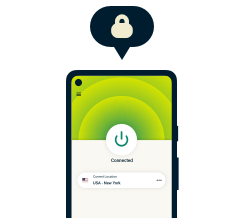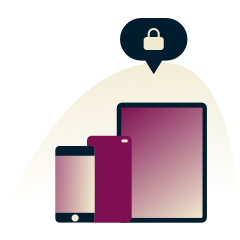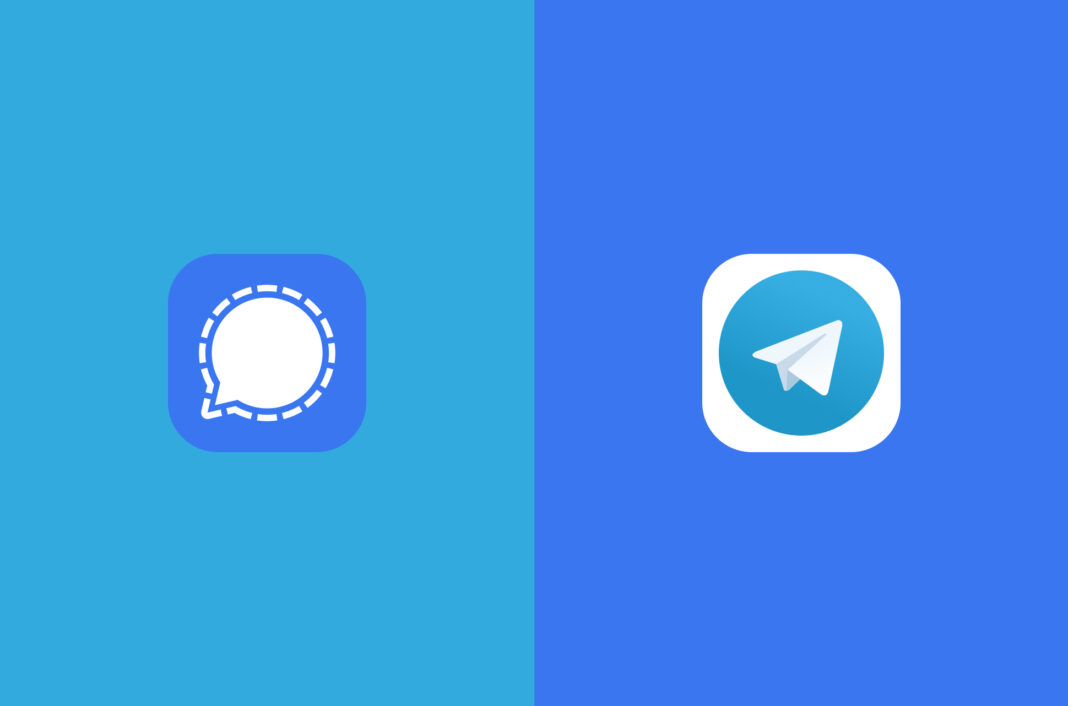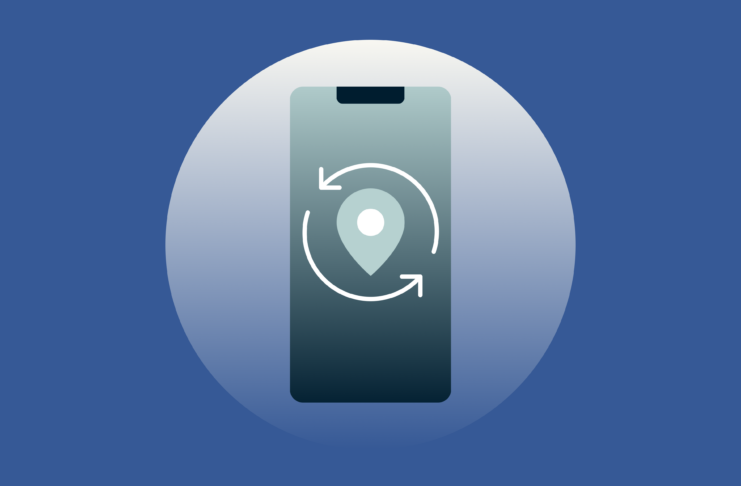In the world of privacy-focused messaging apps, Telegram and Signal are the two that stand out. Both are much praised for their privacy and security features, but they have significant differences. Here’s our breakdown of how these two popular apps compare.
What is Signal?
Signal is a secure messaging app that focuses on privacy and encryption. It was developed by the Signal Foundation, a non-profit organization, with the goal of providing users with a secure and private messaging platform. Signal is a staunch advocate for the continued use of end-to-end encryption, which ensures that only the intended recipients can read sent messages and media and no one else in between. Signal’s code is also open source, increasing its transparency and ensuring that any flaws can be identified quickly.
What is Telegram?
Telegram is a messaging app that allows users to send messages, make voice and video calls, share files, and create groups. Although Telegram has been around since 2013, it started making a name for itself in 2019-2020 as a tool used by protestors to organize large groups of people. This was primarily due to the group chat function—a Telegram group can contain up to 200,000 members. It also offers “channels,” a feed with which organizers can post updates. And users can achieve greater anonymity by keeping their phone number hidden.
Is Signal better than Telegram?
Make no mistake, both of these apps are great options. But one might suit your needs better, based on their features. In determining which of the two apps is better, we compare them on several dimensions.
Encryption
Signal
The core of Signal’s security model is the Signal Protocol, which provides end-to-end encryption for messages and calls, ensuring that only the sender and recipient of a message can read its contents. This means that not even Signal’s servers have access to the content of the communications.
Signal Protocol is the underlying encryption technology used by Signal. It’s widely regarded as one of the most secure encryption protocols available today. The protocol is designed to ensure that past messages cannot be decrypted even if a key is compromised in the future, combining the Double Ratchet Algorithm, prekeys, and a triple Diffie-Hellman handshake.
Telegram
While every chat and call on Telegram enjoys encryption of some form, only very select types of communication are end-to-end encrypted—the gold standard of encryption. If it’s end-to-end encryption you’re after, then no, chats and calls are not protected by E2EE by default.
End-to-end encryption is enabled for one-to-one calls and messages if you select the Secret Chats option. Secret Chat messages also can’t be forwarded, and there’s a self-destruct timer you can switch on, with intervals ranging from one second to one week.
Other types of chats, group calls, live streams, groups, and channels use secure client-server encryption. Telegram states that everything stored on their servers is encrypted, and the keys protecting that data are split apart and never kept with the data they protect.
What this means: Signal has stronger security, as everything is end-to-end encrypted. However, Telegram’s use of different types of encryption, while perhaps not quite the gold standard, allow for greater flexibility.
Ease of signup
Both apps have the same signup process. Both only require your phone number. After downloading either app, here are the main steps:
- Enter your phone number (including your country)
- Verify your phone number via a code sent by SMS
- Set up your profile visible to others, including a name (can be fake) and an optional picture
Signal uses your phone number as your identifier, allowing others to contact you if they have your number in their contacts and also use Signal. Telegram also uses your phone number as your identifier, but it also lets you pick a username. By setting up a username, you can communicate with others without giving out your phone number.
What this means: In terms of how easy it actually is to sign up, they’re about the same. But Telegram offers the feature of usernames, which lets you communicate with people without them knowing your phone number, thereby increasing your privacy and making it easier to connect with people. However, Signal has announced that it is now testing usernames, too.
Device support
Signal
- You can get Signal apps for Android and iOS.
- If you want the app on your computer, you can download the desktop app for Windows, macOS, and Linux computers, but they need to be linked to your phone app.
- There is an iPad app but no dedicated Android tablet app, although the phone apps work on tablets that have phone functionality.
- No web-based service to log in on your browser, due to aspects of its encryption security.
Your phone app will always be your main device (because it has your phone number), with other apps needing to be linked to it. There is a limit of five devices that may be linked to your phone’s Signal account. Messages are synced, although older messages from prior to linking will not show up on the new device.
Telegram
- You can get Telegram apps for Android and iOS.
- Telegram offers dedicated apps for tablets.
- There is also a desktop app for Windows, macOS, and Linux, and they don’t have to be tied to your smartphone app.
- Telegram offers a web-based version, so you can use it from your browser.
All your Telegram apps on different devices are synced, and there is no limit to the number of devices you can sync.
What this means: Telegram supports more platforms, allowing you to sync as many devices as you like so you can access your Telegram account more easily. However, the reason for Signal falling short on device support is the stringent security requirements it’s set for itself. So again, it’s a matter of whether you want flexibility or E2EE security.
Overall features
Signal
End-to-end encryption for all conversations is undoubtedly the best feature of Signal. In fact, most of Signal’s features are security-oriented.
- End-to-end encryption. Signal uses state-of-the-art end-to-end encryption (powered by the open-source Signal Protocol) to secure all messages, voice and video calls, ensuring that communication can only be read or heard by the sender and the recipient.
- Self-destructing messages. Signal allows users to set timers on messages, causing them to disappear from both the sender’s and the receiver’s devices after a set amount of time.
- No ads or trackers. Signal is a non-profit organization and operates without ads, affiliate marketers, or trackers.
- Screen lock. Signal includes a screen security feature that prevents message previews from appearing in the recent apps list.
- App authentication. You can set a PIN or use biometric authentication to access the app.
- Sealed sender. This feature adds another layer of privacy by hiding the sender’s identity from Signal servers.
- Safety numbers. Each Signal conversation has a unique safety number that participants can use to verify the security of their messages and calls with each other, ensuring their communication is not subject to a man-in-the-middle attack.
- Note to self. Signal allows users to send messages to themselves, which is useful for making notes or keeping important information accessible across devices.
- Relay calls. Users can choose to route calls through the Signal server to avoid revealing their IP address to their contact, adding another layer of privacy to calls.
- View-once media. This feature lets users send photos and videos that can only be viewed once before they disappear, similar to self-destructing messages but specifically for multimedia.
Telegram
While Telegram is considered secure, it is more focused on flexibility and convenience for the user than Signal.
- Cloud-based. Telegram messages are securely stored in the cloud, allowing users to access their messages from multiple devices simultaneously and ensuring that data loss is minimized.
- Large group chats. Telegram supports large groups of up to 200,000 members.
- Channels. Channels can be set up for large communities, allowing for public broadcasting to wide audiences.
- Automatic responses. Telegram’s bot platform allows the creation and use of bots to provide automated services, news, games, and integrations with various services, enhancing the app’s functionality.
- File sharing. Telegram allows users to share files of up to 2 GB each, supporting a wide range of file types. This is significantly larger than what many other messaging apps offer.
- Secret Chats. Secret Chats are end-to-end encrypted, ensuring that only the sender and recipient can read the messages. These chats also support self-destructing messages.
- Self-destructing messages. You can order your messages, media, and files to self-destruct in a set amount of time after they have been read or opened.
- Customizable themes. Telegram users can customize the appearance of the app with different themes and backgrounds.
- Stickers and emoji. A vast library of stickers and emoji is available, with the ability to create and upload custom stickers.
- Polls and quizzes. Telegram groups and channels can host polls and quizzes.
- Voice and video calls. Telegram offers high-quality voice and video calls.
- Username feature. Users can communicate without revealing their phone numbers, using usernames instead. This enhances privacy and could make it easier to connect with others.
- Folders and tabs. Telegram lets users organize chats into folders, making it easier to manage conversations, especially when handling a large number of chats.
What this means: Signal has a greater focus on features that increase the privacy of your conversations, while Telegram offers more ways to communicate with large groups and generally have fun using the app.
Group chat features
Signal
In 2020, Signal notably revamped its video group chat system, making it end-to-end encrypted like everything else on its app. Features of its group chats include:
- End-to-end encryption on all messages and calls, including voice and video calls for groups.
- Designated group admins who can add and remove members. They can also manage group settings, including changing the group name, avatar, and disappearing messages timer.
- Members can mention specific individuals in a group chat for direct notifications.
- Admins can create a link to invite new members to the group, making it easier to add people without needing to have their phone number.
Telegram
Telegram has made a name for itself with the large number of people a group chat can contain—a maximum of 200,000 members. By contrast, Signal allows 1,000 members, while WhatsApp’s limit is 1,024. This is one reason Telegram is used to mobilize large-scale protests.
- Telegram groups can support up to 200,000 members, the largest of any chat app.
- When groups grow beyond a certain size, they can be converted into Supergroups, which have more advanced features such as admin tools and pinned messages.
- Group administrators can manage membership, adjust group settings, moderate chat, and set up advanced permissions for members.
- Admins can create polls and quizzes directly in the chat.
- Telegram supports voice and video calls within groups.
- Telegram bots can be added to groups to provide automated services, entertainment, or moderation tools.
- Members can be directly replied to or mentioned, which sends them a notification, ensuring that messages are seen by the intended recipients.
- Groups can be set as public, with a searchable alias and available for anyone to join, or private, where membership is by invitation only.
What this means: Telegram has a lot of features for its group chat service, but group chats are not end-to-end encrypted. Signal group chats have more limited features but they are end-to-end encrypted. So again, it’s a tradeoff between versatility and privacy.
Privacy and security
Signal is stronger on privacy and security, taking every measure to ensure conversations stay private with E2EE and features like disappearing messages and view-once media (see the above list of features). Telegram’s security levels are not quite as high, but it allows the service to offer lots of functionality. Both are open source, meaning anyone can inspect the code of their apps for security flaws.
Here is an overview of the two apps’ various features and characteristics:
| Signal | Telegram | |
|---|---|---|
| Pricing | Free | Free, with paid tier |
| Supported devices | Apps for phones, desktop, and tablets, but no web-based service | Apps for phones, desktop, and tablets, with web-based service |
| Active user base | 40 million | 800 million |
| Encryption | End-to-end encryption for all conversations | Secret Chats are end-to-end encryption, but other services use client-server encryption |
| Open source | Yes | Yes |
| Data collection | Barely anything beyond knowing your phone number | Metadata like IP address, devices and Telegram apps you’ve used, history of username changes |
| Self-destructing chats | Yes | Yes |
| Authentication to access the app | Passcode or biometrics | Passcode or biometrics |
| Hide your phone number | No | Yes |
| Two-factor authentication | PIN set by you | Password set by you |
| Group capacity | 1,000 members | 200,000 members |
| File compression | Files can be sent with or without compression | Files can be sent with or without compression |
| Transfer limit | 100MB | 2GB (Premium is 4GB) |
| Voice calls | Yes | Yes |
| Video calls | Yes | Yes |
| Premium tier | No paid tier | Telegram Premium, offering additional features |
| Ads | No | Yes |
Conclusion: Main differences between Signal and Telegram
Signal and Telegram are really very different. Signal uses end-to-end encryption for all conversations; Telegram offers EE2E only as an option via Secret Chats. While Signal can be thought of as the most secure chat app, Telegram is able to be more of a social media app, bringing together large communities that can broadcast info on channels (similar to, say, Twitter feeds).
If your focus is on privacy and security, and you just want to chat with people one-to-one or in small groups, then Signal is your best bet. If you’re looking to join a movement or have easy access to information, then go for Telegram.
FAQ: About Signal vs. Telegram
Which is better to use, Telegram or Signal?
It depends on what you want to achieve. If you just want to have conversations with a small number of people but with extremely high security, then Signal is for you. If you want a richer, community-focused, social media-type experience with fun features, then Telegram is for you.
Is Telegram safer than Signal?
No, it is not. While Telegram does have a significant privacy feature that Signal lacks—the ability for you to use a username and not reveal your phone number—Signal uses end-to-end encryption for all conversations and engages almost no data collection. Therefore, Signal is safer.
What’s the difference between WhatsApp and Signal?
While both chat apps use end-to-end encryption for messages, WhatsApp collects a lot of information about your app usage (such as who you’re sending messages to and at what time), whereas Signal does not. WhatsApp is owned by Meta, a company very interested in recording as much data about you as possible, whereas Signal is run by a non-profit dedicated to personal privacy. These are the main differences between WhatsApp and Signal, which both offer text, voice, and video calls.
What’s the difference between WhatsApp and Telegram?
One difference is WhatsApp offers end-to-end encryption on all messages, whereas on Telegram, you have to use the Secret Chats feature—any other kind of message on Telegram uses different forms of encryption. Telegram is also known for its channels, which allow account holders to share information to a large group of people. WhatsApp recently added channels, in September 2023, so it will take time to pick up steam. Telegram also can accommodate up to 200,000 people in a group chat, which makes it attractive as a service for organizing large events, whereas WhatsApp’s max is 1,024.

Privacy should be a choice. Choose ExpressVPN.
30-day money-back guarantee


























